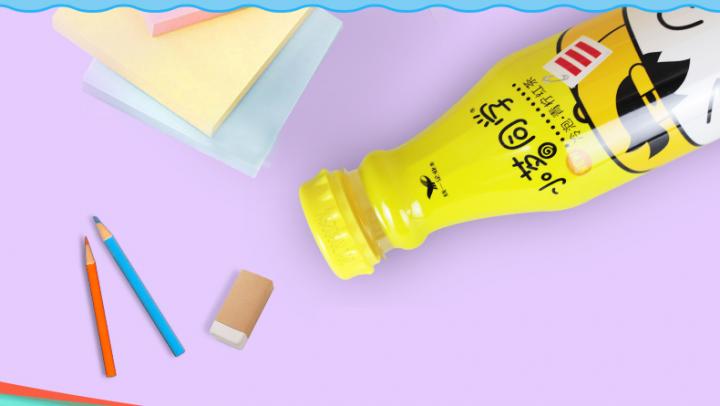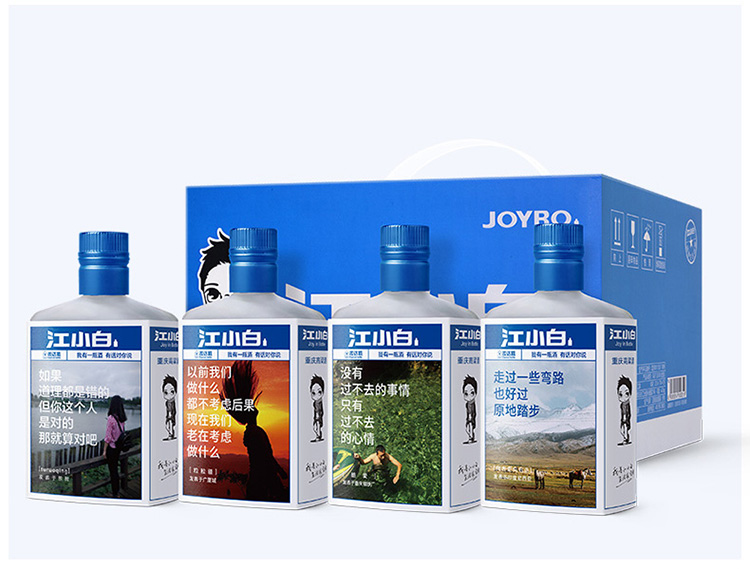

In the Digital Age, Unveiling FMCG Brand Naming Trends
In recent years, consumer behavior, language style, and even social attitude has all presented a kind of playful and fun style, often laughing at oneself or between each other. When this trend is understood, corresponding products all come out to stimulate impulsive buying tendencies among a young generation. How can brands create an eye-catching and memorable product? A brand name is just the perfect entry point.
In this article, we explore various approaches to brand naming for FMCG (Fast-Moving Consumer Goods) brands, shedding light on the evolving Brand Naming Trends.
Psychologically speaking, people all long to be understood – with an implicit hope that there exists a product we can relate to. When a product reminds us of someone we know, whether in reality or the virtual world, it is a delightful and refreshing thing. For example, the launch of Classmate Xiaoming, Yanxiaomai, and Jiangxiaobai completely grasp this feeling, reflecting current Brand Naming Trends.



Classmate Xiaoming, or 小茗同学 in Chinese – which may confuse people by just looking at the name – can actually catch the young consumers’ heart instantly when combing the packaging design of the product. “Xiaoming?” ”Are you calling me?” ”Or is that my old classmate next door?”
小明 xiaoming is a name existing everywhere in our daily life. By changing the character to “茗” (tea) with the same pronunciation as 明 (bright, commonly used in person’s name), it not only relates well to the product nature as a cold-brewed tea, but also draw the distance between the brand and consumers closer through a rather familiar character image.
Yanxiaomai, (燕小唛 in Chinese: 燕麦 refers to oat; 麦 is changed to 唛 to make it more unique; it is relevant with the food category through the radical 口 mouth; and when combined with 小 little, the name more appears like a nickname.) and Jiangxiaobai (江小白 in Chinese: river/ little/ white; here 白 easily evokes 白酒- white spirit) are 2 other examples. Both adopt the personified naming approach of “X小X”, which is often seen as nickname-style in Chinese. Names like these not only point out a product’s nature, but also render a refreshing, unique, and accessible feeling.
Comparing with traditional beverage names, these 3 brand names break people’s inherent thinking mode by having brand communication originate from the brand assets – in this case, the name makes the brand attractive. The names are often combined with unique packaging design, adding some interactive expressions like “你瘦了” (“You look slim”) and “青春不朽,喝杯小酒” (“Have a drink and cheers to our eternal youth”).
Replacing one character with another homophone is a very common naming method. The below 2 brands are masters in this field.

If I recall, most chocolate milk and relevant drinks’ names are all fairly mediocre – for example, 高乐高 (Gāolègāo , tall/ happy/ tall),维他奶 (Vitasoy, preserve/ he/ milk),阿华田 (Ovaltine, a/ Chinese/ farmland), and others. This innate impression was broken when Brightdairy launched 巧克努力 Qiaokenuli (chocolate milk beverage): by just adding a little concept of “effort” into the category name “chocolate”, the name 巧克努力 Qiaokenuli appears clever, with an attitude of a teddy bear struggling for a beverage. This product feels so different and cute that I instantly want to have a try.

Another new eye-catching new product is 爱心觉萝 Aixinjueluo (a carbonated drink with pineapple taste), from Mizone. The name originally came from the ancient emperor “爱新觉罗 Aisin Gioro”, in the Qing dynasty. By placing 2 new characters into “爱心觉萝” (kind heart/ feel/ pineapple), it expresses the feeling “if you’ve got a kind heart, you can feel this new Mizone pineapple”. Of course, this several-character slogan is purely for fun and with no logic inside. However, this astonishing name successfully attracts massive online discussion with its bright packaging and 1 customized viral video uploaded to Weibo.
But what if you are trying to understand what this name really wants to say? What does it have to do with “爱新觉罗 Aisin Gioro”? The fact of the matter is that it really doesn’t matter, as long as you can feel the dramatic effects from the product name when it’s combined with the packaging. This combination really makes a hit – it accurately captures people’s mindset in this internet era – the name is not only able to trigger 2nd-time scoff but, also balance this point with a nice general impression, which is not easy for any brand.
In recent years, as a new category, blueberry wine has won the preference of young, urban female consumers in China with its emotional name and eye-catching packaging design.

悠蜜 Umeet

有时 Youtime
New brand “有时 Youtime” not only indicates “sometimes”, but also carries the idea of “having time” which means that sometimes I have a special period of time and space, away from daily pressure, just indulging myself in a tipsy moment. The corresponding English name Youtime brings out strong, caring sense and resonates well with consumers.
Famous historic brand Moutai also brought a new blueberry wine called “悠蜜Umeet”, which means during a relaxing and sweet period of time, “悠蜜”(leisure/ sweet), as your ”密友” (close friend) or “闺蜜” (bestie), always stays by your side. The English name Umeet suggests a beautiful encounter in life and brings rich and different layers of fashion experience to consumers through its unique product outlooks.
The popularity of blueberry wine is based on the deep understanding of the fact that today’s women live and work alone in big cities and are under huge pressure, hence some little moments to slow down and relax a bit are undoubtedly necessary.
Once, “loser” is a word that nobody wants to talk about, but today “小确丧 total loser”has already replaced “小确幸 little moments of happiness” to be the new hot topic for young people and “loser culture” brand communication has been extremely popular in 2017.

没希望(不熟)酸奶 No Hope (Not Close With You Yogurt)

没希望(扎心)酸奶 No Hope (Heartbroken Yogurt)

丧茶 Loser Tea
The launch of Loser Tea and No Hope Yogurt further demonstrates this trend. No Hope is New Hope Dairy’s campaign to promote their yogurt. They have temporarily changed their brand name on their yogurt packaging from New Hope to the opposite but visually similar No Hope. Their marketing campaign is built around this recent trend to resonate with young buyers.
As part of No Hope yogurt’s brand communication, Not Close With You Yogurt and Heartbroken Yogurt follow this “loser” naming trend and proudly mock themselves and their consumers with self-deprecating humor. Though it might appear full of negative energy by directly saying all the hard situations young people face in their life, the names actually want to reflect the truth that most people live very positively while bearing all the pressures.
Of course, lots of brands still hold cautious attitude towards “negative energy” brand communication since it just captures the eyeballs in short-term. In the long-term, it will bring more negative impact for the overall brand image.
From 2015 until now, creative expressions continue to pop up in the beverage category. Most brands start to put more and more emphasis on the combination of product naming and packaging design with digital brand management, meanwhile closely following the popular trend in younger consumers. Hence, the novel, unique, playful and fun products constantly attract people’s attention recently. As a renowned expert in beverage branding, serving clients like Mondelez, Pepsico, Nestle, Mizone, and more, Labbrand remains dedicated to unveiling the latest Brand Naming Trends within the beverage industry.
A Labbrand Group Company © 2005-2025 Labbrand All rights reserved
沪ICP备17001253号-3To improve your experience, we use cookies to provide social media features, offer you content that targets your particular interests, and analyse the performance of our advertising campaigns. By clicking on “Accept” you consent to all cookies. You also have the option to click “Reject” to limit the use of certain types of cookies. Please be aware that rejecting cookies may affect your website browsing experience and limit the use of some personalised features.